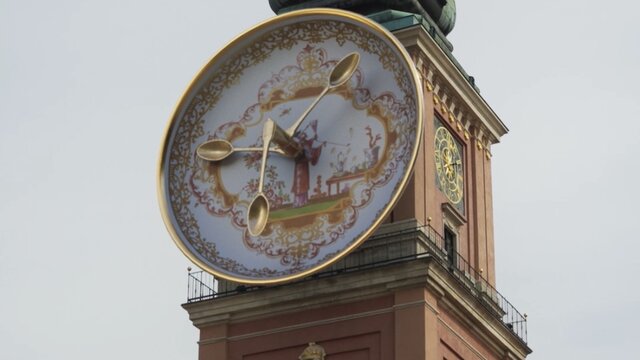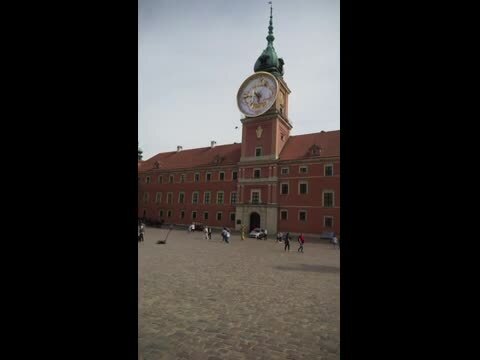Who saw the big saucer from the teacup on the Clock Tower of the Royal Castle in Warsaw?
In the last days of April, videos showing a large teacup saucer appearing on the Clock Tower of the Royal Castle in Warsaw hit the web. Has the Royal Castle clock actually changed its appearance? One might have thought so! And all thanks to an innovative advertising formula (FOOH, or Fake Out of Home) and the technology behind it that enables the generation of an image that creates a hyperrealistic illusion. The Royal Castle in Warsaw was the first cultural institution in the world to use the FOOH solution in promotional activities to announce its newly opened Porcelain Gallery.
The area of use of CGI (computer-generated imagery) technology, i.e. computer-generated images that create amazing special effects, is mainly in films and computer games. CGI solutions are also increasingly used in other fields, especially in marketing. The protagonist of the first campaign using CGI techniques to promote a cultural institution in Poland was the Royal Castle in Warsaw.
In videos shared on social media, we can see a large teacup saucer mounted as a clock face on the tower of the Royal Castle. The vessel’s design refers to the unique Meissen porcelain travel service, which has recently been on display at the Castle as part of the newly opened Porcelain Gallery.
The view presented, although startling, is so realistic that even a trained eye may have difficulty distinguishing fiction from reality. Recorded voices and reactions of passersby further enhance the impression of realism.
We decided to surprise the capital with an unusual form of advertising and take advantage of the fact that a few days ago the Royal Castle opened to visitors a new permanent exhibition presenting porcelain masterpieces. Thanks to the technologies used in FOOH, it was possible to create realistic images in the form of short films, which present a cup saucer mounted on the Clock Tower. The placement of such an unexpected element in the space made it possible to arouse interest and attract the attention of the audience effectively - says Magdalena Romańska, Deputy Director for Marketing, Royal Castle in Warsaw.
The teacup saucer mounted on the tower of the Royal Castle, a symbol of Warsaw, is part of an innovative campaign using the Fake Out of Home (FOOH) formula to promote the Castle's porcelain collection.
The juxtaposition of surprising elements in public space through computer-generated images creates viral promotional content. As the Royal Castle example shows, this solution can be used not only in industries such as beauty or fashion but also in the cultural sector.



